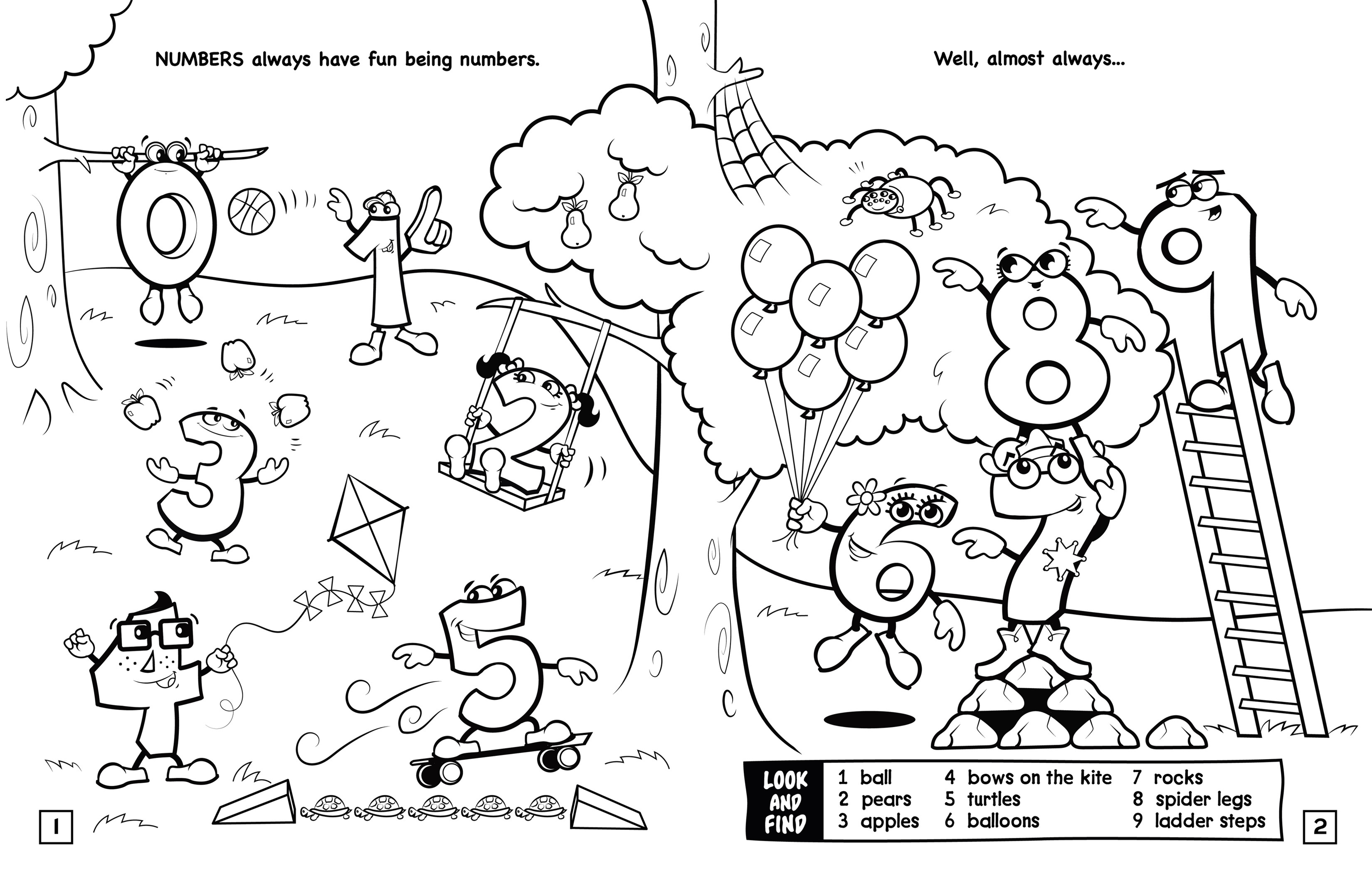NUMBERS COUNT! Count Up To 9
This is the first book in the SMILING DOG® EARLY-MATH series. (Just click the cover to buy it.)
Math Concept: This book focuses on counting and understanding that numbers tell us the size of groups (such as learning that we call this quantity qqq "three" and represent it with the symbol "3," and learning we call this quantity ssss "four" and represent it with the symbol "4," etc.). Counting and understanding that numbers tell us the size of groups are both critical early math skills!
Although it might sound very odd and unintuitive, just because a child can accurately count a group does not mean that child understands that the last number associated with their counting (e.g., "one, two, three" when counting qqq) tells the group's size ("three"). Counting and group size are two different things! I remember when I first learned this, it seemed so unintuitive! Because, for most adults, counting and group size are ideas that are inextricably linked. But these ideas do not start off linked for children. Children must learn that when they count a group (e.g., qqq), if they count accurately, the last number associated with their counting (e.g., "one, two, three") tells us the number of items in the entire group. If a child does not understand this, their understanding of what numbers represent will not match the understanding of numbers they'll need for understanding math. If you find this idea intriguing, look into something called the cardinal principle. It is super important!
Recommendation: No one book can teach everything a child needs to understand about counting, group size, the cardinal principle, etc. But, how you use the book can make a big difference! It's really important to help a child understand that a group's size is "a thing" and to link the idea of a group's size to how counting tells us group size. I've shared a page from the book below as well as some recommendations for how to use the pages in the book to help a child learn key math ideas. The page below suggests to LOOK AND FIND… 2 pears, 3 apples, etc.
 Instead of simply asking your child to find and count the pears, apples, etc., try something like:
Instead of simply asking your child to find and count the pears, apples, etc., try something like:
"Let's find all the pears...Great! How many pears are there? There's two pears. (Maybe circle the group of pears)…Now let's count to be sure. One-two. Two pears! That last number we count is super special, it tells us how many pears there are all together—two." (Maybe circle all the pears again)…
"Now let's find all the apples. How many apples are there? There are three apples …let's count them to check. One-two-three." Three apples! (Maybe circle the apples)…Remember, when we count, that last number we say tells us something special—how many there are all together—one, two, three—three apples here."
(Maybe circle all the apples again)…Etc.
Story: The numbers 0 to 9 go on an adventure to find out if it would be even more fun to be letters. Along the way, they encounter lots of groups to count and quantify. When they finally meet, will the NUMBERS give up being numbers and join the LETTERS? Read NUMBERS COUNT! COUNT UP TO 9 to find out.
Activities: Kids will enjoy coloring the black and white story pages, doing the "LOOK AND FIND" activities throughout, and doing the workbook pages in the back. The pictures and activities are designed to help children learn the size of groups associated with the numbers 0 to 9—the building blocks of all other numbers. Maybe even cut out or copy the pages and hang them up!
Remember: SMILING DOG® EARLY MATH books aren't just a story book, a coloring book, or a math workbook. Each SMILING DOG® EARLY MATH book combines all three! The story and pictures make the math fun and help children understand key math concepts. Coloring and workbook pages invite children to explore their understanding and practice newly acquired math skills. Enjoy!